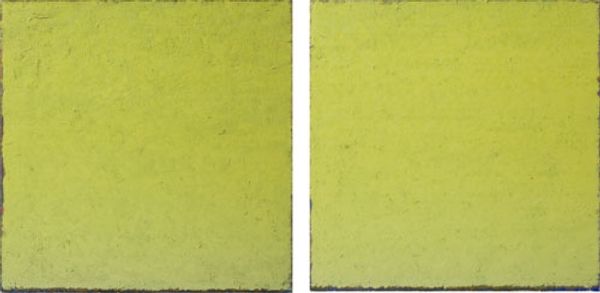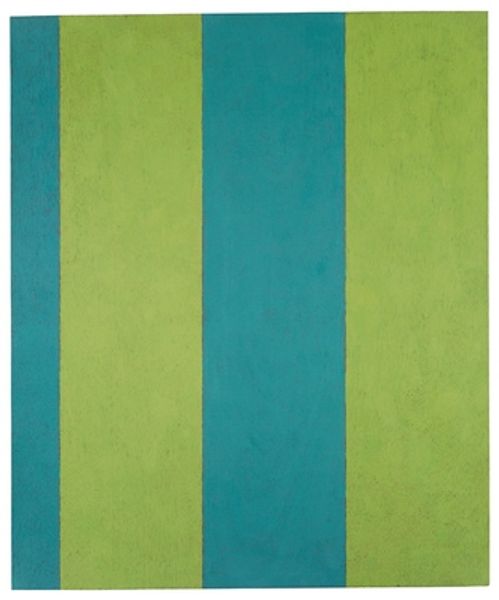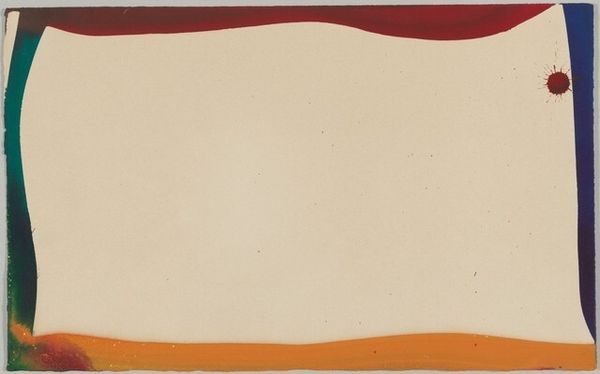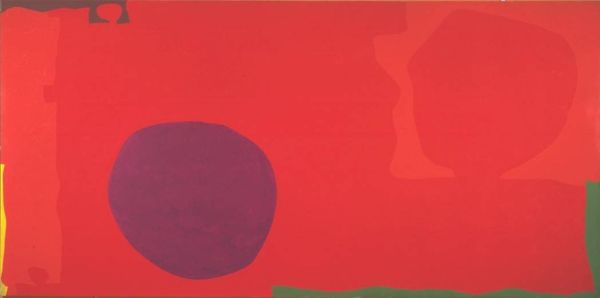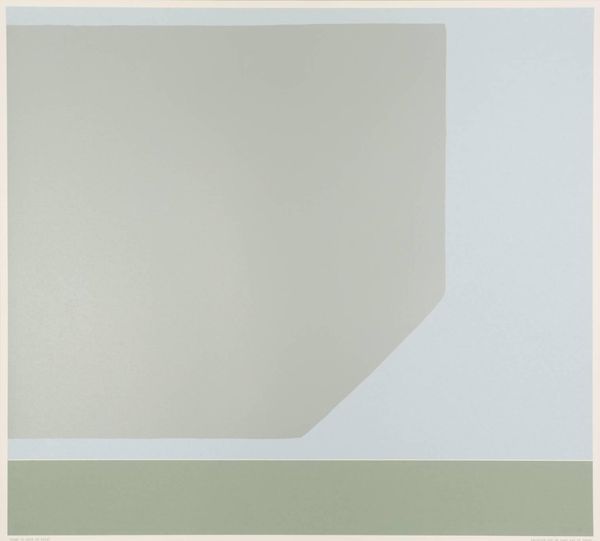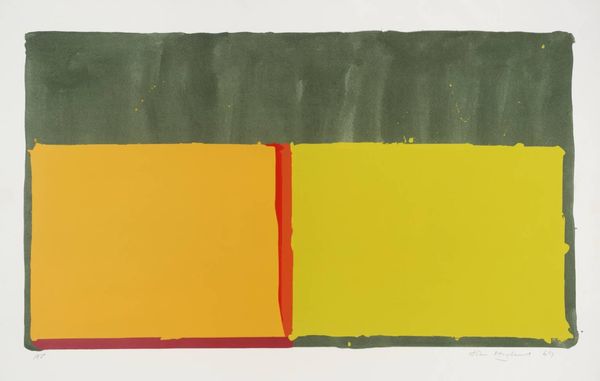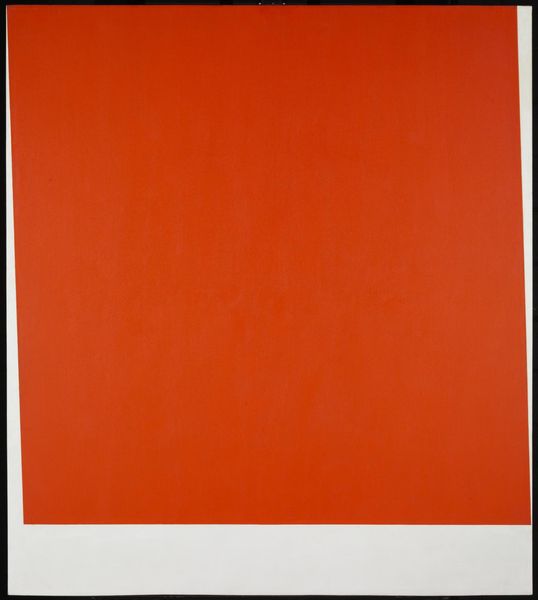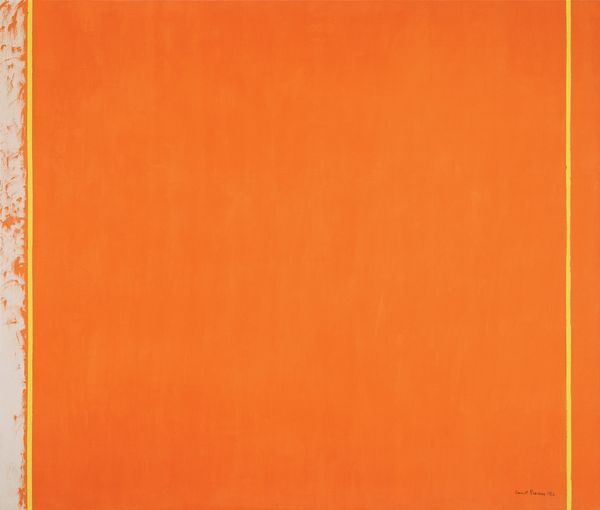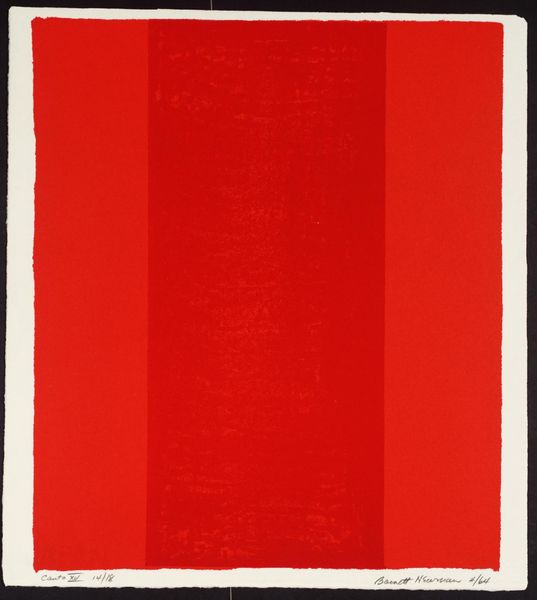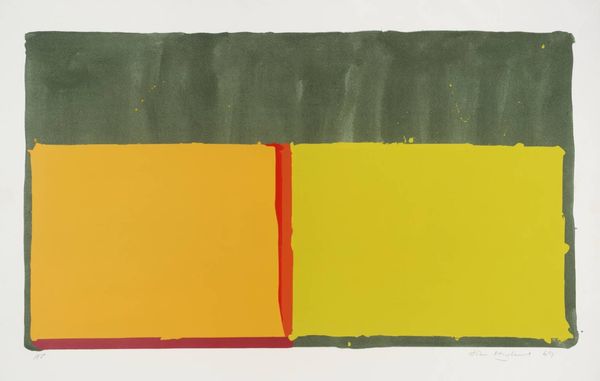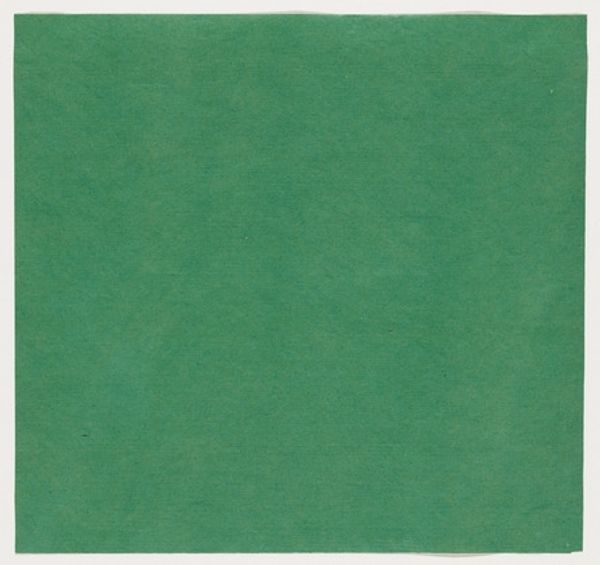
print, paper
# print
#
colour-field-painting
#
paper
#
geometric-abstraction
#
abstraction
#
modernism
Copyright: John Hoyland,Fair Use
Curator: I find myself immediately drawn to the chromatic tension within this lithograph. There's an undeniable tranquility juxtaposed with the energy of the forms. Editor: Ah, yes, "Untitled (Lithograph)," a work rendered on paper by John Hoyland. What do you make of its spatial arrangement? Curator: I'm particularly struck by how Hoyland establishes pictorial space through the interaction of these distinct color fields. The bold green expanse is assertive, yet contained by the sharp lines that both frame it and bisect it, and these orthogonal relationships give it a satisfying sense of compositional rigor. Editor: Absolutely. Given Hoyland's context within the Colour Field movement, how does this piece reflect, or perhaps even subvert, the broader goals of the movement? Are we invited into some other sort of experience? Curator: It firmly adheres to modernist tenets of flatness. There's no attempt at illusionism here. However, this might reflect broader ideas in circulation about "freedom," the natural world and artificiality of geometry. What narratives do you think a piece like this generates for its audience? Editor: It is precisely this tension between what's within and outside the frame, what’s gestural or geometric, which gives the work such intriguing political weight. Do the stark contrasts in the palette indicate an emotional distress or the cultural tension characteristic of modernism and postmodernism? Are the shapes boundaries, or connections between new modes of thought and creativity? Curator: Such interpretation relies on imposing extrinsic values on Hoyland's compositional decisions, surely? The effectiveness hinges on a phenomenological reading – our subjective experience of the colour planes in dialogue. Editor: And what of that experience is not influenced by power dynamics, historical precedents? We can't separate aesthetics from their complex entanglement. This act of simplification seems too complex, historically, to accept it as an intentional abstraction alone. Curator: While I appreciate your contextual insights, the formal integrity here, with color saturation and scale relations, creates a striking presence on its own terms. The work creates, by its own visual parameters, a satisfying aesthetic experience regardless of extrinsic narratives. Editor: I can concede the purely visual aspects can be impressive. But there is so much more if we keep digging deeper into art's significance. The colors here don’t stand alone; they resonate with socio-political realities. Curator: Perhaps it is in such discourse, in bridging aesthetics with historical insight, that art finds new meaning today. Editor: Agreed, for our contemporary world it might very well be vital to bridge aesthetics and socio-historical insight.
Comments
No comments
Be the first to comment and join the conversation on the ultimate creative platform.
